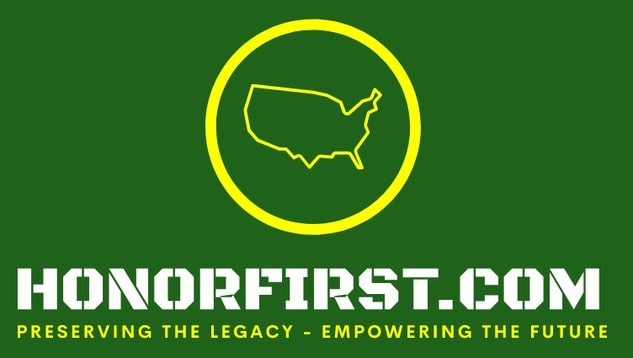October 30 - November 5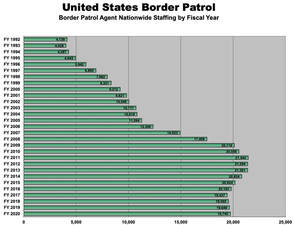 Good morning! Welcome to another This Week in USBP History! This week I'd like to write a little about employee retention. Let me start with some points of reference.
So, employee retention is a problem for the Patrol and it's going to become far worse! This problem is exasperated due to the long-term dissatisfaction of the workforce as reflected in FEVS scores, significant spikes in hiring in the mid-2000s and a lack of meaningful initiatives to retain employees. Recently, I was told of a virtual town hall that had occurred where the Patrol's senior leaders were asked about poor employee retention rates. HQ's response was that retention bonus funding had been requested but not approved. All of the studies that I have read stated that when an employee perceives that they are being paid fairly, that giving bonuses or raises as a method of addressing morale problems will merely prolong the inevitable. The bonuses will NOT fix morale, they will remain dissatisfied and will leave. The same holds true for employee retention bonuses, see below:
The USBP is solid at responding to an employee crisis with the Chaplains, Peer Support and Honor Guard. The Patrol is stepping up its resiliency initiatives to provide the workforce with better techniques for coping with personal challenges and stress. When employees have an emergency, we leap into action for their benefit and graciously accept assistance from our friends at the Border Patrol Foundation. Where great opportunities for improvement for the USBP exists, is in valuing the workforce on a day by day basis (not just during a crisis). Doing better for the workforce on a daily basis is what will have impacts on attrition/retention, FEVS and mission sustainment/accomplishment. Things like communication (listen and share information better), employee friendly policies, appropriate recognition (my personal favorite), fair discipline, etc... In summary, the Patrol is putting forth great effort in recruiting new employees, and at responding to employees in crisis. Awesome and worthy work. However, the Patrol is lacking in retention initiatives. To address retention issues, I strongly recommend against ineffective and expensive retention bonuses. I believe the keys to improving retention numbers lay within improvements:
What another great week in USBP history! This week starts with the Father of the Border Patrol's final proposal to create the USBP in 1918 (and it was approved but not acted upon). We have uncertainty of the authority of Patrol Inspectors in 1924 and the earliest reference of which I am aware to a Border Patrol Intelligence unit in 1925. We also have the finalizations of the spec sheets of USBP Flag and Pennant by the U.S. Army institute of Heraldry in 1998. We remember two Border Patrol heroes on the anniversaries of the actions leading them to being recognized with Newton-Azrak Awards. We also remember three of our fallen on the anniversaries of there deaths. Enjoy the blog and have a great week! Cliff PS -
Esprit de Corps The workplace climate resulting from a combination of organizational pride and employee morale.
Esprit de corps is reinforced through the shared goals, mission and values of the organization and its employees. The definition turns Esprit de Corps into a simple formula and defines parts that comprise organizational pride and employee morale. Esprit de Corps = Organizational Pride + Employee Morale Esprit de Corps is the key to a healthy organization and engaged employees. Honor First is foundational to the Border Patrol's organizational pride and integral to its Esprit de Corps. Documents/Events 1918
1932
Newton-Azrak Award Action Anniversaries Follow this link to see examples of USBP employees Upholding Honor First.
2000 Jesus E. De La Vega Supervisory Border Patrol Agent El Centro Sector On November 2, 1999 at about 11:20 PM, Supervisory Border Patrol Agent Jesus E. De La Vega was patrolling the border area along Interstate Highway 8 near Seeley, California. As he turned off the highway, he saw a huge white cloud of smoke covering the ramp. Through the smoke, he was able to make out a vehicle that had just crashed, rolled over twice, and come to rest on its side. Flames shot out from the front passenger compartment and from under the hood. Looking for occupants, SBPA De La Vega spied a single male victim, later identified as a Bruce Allen Stanley, who was severely disoriented and desperately attempting to exit the vehicle. Stanley could make no headway, unable as he was to move his right arm, which had been injured when the vehicle rolled over. Agent De La Vega asked Mr. Stanley whether any other occupants were in the vehicle. The victim stated that he was the only one. As the flames became more intense, Agent De La Vega, oblivious to his own safety, attempted to open the door of the vehicle, but was initially beaten back by the smoke and heat. After a few more attempts, Agent De La Vega was finally able to pull open the door, release the man’s seat belt, and drag him to safety away from the vehicle, which by then was entirely engulfed in flames. Agent De La Vega proceeded to administer emergency first aid to Mr. Stanley and make him as comfortable as possible. Next, he radioed for emergency services, and within minutes, units from the California Highway Patrol, Imperial County Fire Department, and Gold Cross Ambulance had responded. They treated Mr. Stanley for the injuries to his shoulder and arm and for smoke inhalation. For his part, Agent De La Vega escaped injury. His selfless and heroic actions saved a life and are a true inspiration. 2019 Tony Miranda Assistant Chief Washington D.C. Past Event On November 1, 2007, in Wellton, AZ, Agent Miranda observed a house almost completely engulfed in flames. Without regard for his personal safety, he entered the structure through the front door and assisted a woman in a wheelchair to safety. He immediately reentered the house, located a double amputee elderly man, and led him to safety. At that point, Agent Miranda was informed that a mother and two children were still in the house. A third time, he entered through the front door only to find that the ceiling was fully engulfed and that fiery debris was falling on him. As he retreated outside, he was told that the room in which the mother and children were believed to be was on the rear, right side of the house. With the help of a neighbor, Agent Miranda dislodged an air-conditioning unit from the wall, creating an entry point into the room. For a fourth time, Agent Miranda entered the house to save people. He found the room to be full of black smoke, with such intense heat that breathing was nearly impossible. Again, he was forced to retreat. Once outside, Agent Miranda instructed the neighbor to use a nearby garden hose and to douse his uniform with water. For a fifth time, Agent Miranda entered the house. He found the room to be engulfed in flame, full of choking smoke and raining debris from the ceiling that was on fire. Over the next week, Agent Miranda would lose his eyelashes, eyebrows and much of his hair. The heat that he experienced inside the house was so intense that it cause the hair to become brittle and to break off. For his conspicuous heroism and extraordinary courage, he was awarded the Commissioner’s Meritorious Service Award for Valor and the Secretary’s Valor Award. Agent Miranda’s actions brought great credit upon himself and the United States Border Patrol. USBP Fallen As of May 16, 2022, the U.S. Border Patrol has suffered 152* fallen. Titles:
The facts regarding each officer are presented without major editing of the "language of the day" found in the reports detailing the circumstances of each event. This is done to provide the reader an association with historical timeframes. Employees who died in the line of duty due to being exposed to deadly illnesses will not have the cause of death listed. *With the exception of two of the fallen immediately below, all names are listed (or in the process of being included) on the official Honor Roll of U.S. Border Patrol Fallen and inscribed on the National Law Enforcement Officers Memorial. The U.S. Border Patrol should fix these discrepancies. HonorFirst.com honors both of the fallen.
2006
David N. Webb Date of Birth: November 24, 1970 Entered on Duty: February 23, 2004 Title: Border Patrol Agent End of Watch: November 3, 2006 Details: On November 3, 2006, Border Patrol Agent David N. Webb was enroute to his normal patrol duties on the Tohono O’odham Nation within the Ajo Station Area of Responsibility. At approximately 5:18 p.m., Agent Webb was involved in a single vehicle accident. Border Patrol Agents working nearby responded to assist Police and emergency medical services personnel at the scene of the accident. Agent Webb did not survive the injuries sustained from the accident. Agent Webb was 36 years old and was a graduate of the 580th session of the Border Patrol Academy. He served his country as a member of the 186th Infantry in the Oregon Army National Guard, where he saw service in the Sinai Desert as a member of a United Nations Peace Keeping Force from May 2002 to February 2003. Burial Details Unknown 2012 David R. Delaney Date of Birth September 5, 1968 Entered on Duty: December 12, 2002 Title: Border Patrol Agent End of Watch: November 2, 2012 Details: On November 2, 2012, Border Patrol Agent David R. Delaney collapsed and died while patrolling on foot near Big Bend National Park in Texas. Agent Delaney entered on duty as a member of the 536th academy session on December 12, 2002. Following his graduation, he was assigned to the Calexico Station in the El Centro Sector. He then transferred to Houlton and Grand Forks Sectors before settling in at the Big Bend National Park Sub-Station of Alpine Station in the Big Bend Sector in 2011. Agent Delaney is survived by his wife and three children. Gravesite 2021 Anibal A. Perez Entered on Duty: June 26, 2006 Title: Supervisory Border Patrol Agent End of Watch: November 5, 2021 Details: Agent Perez entered on duty on June 26, 2006, as part of the 625th Session of the Border Patrol Academy. At the time of his passing, he was assigned to the Ajo Station in the Tucson Sector, Arizona. The circumstances of his passing were reviewed by an executive panel and the CBP Commissioner who determined that this death occurred in the line of duty. He is survived by his wife Fawna; children: Isabella, Andre, and Milan; parents: Anibal and Dora; and sister: Tara. Cremated
Comments
October 23 - October 29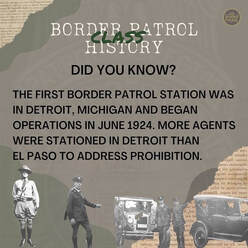 Inaccurate history from the USBP's official social media accounts Inaccurate history from the USBP's official social media accounts Good morning! Welcome to another This Week in USBP History! Before I start the intro, let me extent a huge thank you to Joe Banco. He shared over 1,000 Border Patrol photographs with me and gave me permission to post them in the Honor First Photo Galleries. I updated every gallery with his photos. Visit the Honor First Photo Galleries! If you think about it, researching history is very similar to investigating a crime which is to say there is a general understanding of what happened but many of the details are missing. Further, the evidence that is discovered during the investigation may reshape and sometimes entirely change the initial perspectives. Folklore and inaccurate history are created when the gaps of the unknown are filled with inaccurate and/or untrue narratives that are presented as fact. All of us know that it is human nature to fill the unknown with what make sense in the absence of information. That is usually done without any bad intent or malice. Examples of Border Patrol folklore and inaccurate history include:
In the past decade, much of the Patrol's historic gaps have been filled with quality research at the National Archives and by using other reputable sources. Even then, some gaps exist and logical inferences must be made. When I use an inference as I write about history you'll see me use the phrases, "indications are" or "it is believed". Joe Banco will be even more direct when he fills in the gaps as when he wrote (emphasis added):
Joe and I allow the evidence found in the old documents to drive the narratives we write, even when the folklore and/or inaccurate history may be more appealing. We always let truth to trump appeal. When we fill in the gaps, we do it based on our opinions which are anchored in significant research and study. Joe and I know, more than most, the challenge and difficulty of correcting folklore and inaccurate history. I have been met with anger for spouting what some considered to be Border Patrol blasphemy and threatened with Border Patrol hell. Some folks couldn't believe that Jeff Milton was neither in the Patrol nor a Patrol Inspector. Other folks were severely offended when I put El Paso's Where the Legend Began phrase in a correct historical context (see the HonorFirst History Page). Joe and I do not put forth such effort for monetary gain. Joe is not showered with riches due to book sales (which you absolutely should purchase), and HonorFirst.com is not monetized. Joe and I enjoy the discovery and the sharing of the knowledge that we acquired about an organization of which we care deeply. However, a single post to Facebook, Instagram and Twitter from an official social media account can destroy hundreds of hours of careful and tedious research. Such posts perpetuate folklore and inaccurate history, concealing the research that has proven that much of the Patrol's history may not be as spectacular or sensational as originally thought, but is undoubtedly far richer and interesting. And more importantly, such perpetuation damages organizational pride. Last week, the photo to the right was launched from several of the Patrol's official social media accounts, perpetuating folklore and inaccurate history. Directly addressing the post's claims:
Those responsible for managing the Patrol's social media must show better diligence when presenting the Patrol's history. One post can derail hours of careful research and damage organizational pride. Thank you for letting me vent! Perhaps a more influential reader or two might be able to remind HQ that the national and sector Strategic Communications shops most be more careful with their Throwback Thursday history posts. I would be happy to vet their historic posts before publication, just as I imagine Joe would too. Today's update begins with at 1928 shooting where two Patrol Inspectors and two Mounted Customs Inspectors faced down alcohol smugglers in El Paso, Texas. We have a 1936 letter from a uniform vender requesting clarification on the color of the leather (there were two colors in use at the time). And we have several updates thanks to Joe Banco's books. There are no know Newton-Azrak Award action anniversaries this week. Therefore, I will highlight the actions of Supervisory Immigration Officer James F. Murphy who received the Newton-Azrak Award in 1988. I have conducted numerous searches and cannot find any additional information on his action. If you have any information about it, please send it my way so I can update the site. We also remember five of the Patrol's fallen on the anniversaries of their deaths. Enjoy the blog and have a great week! Cliff PS -
Esprit de Corps The workplace climate resulting from a combination of organizational pride and employee morale.
Esprit de corps is reinforced through the shared goals, mission and values of the organization and its employees. The definition turns Esprit de Corps into a simple formula and defines parts that comprise organizational pride and employee morale. Esprit de Corps = Organizational Pride + Employee Morale Esprit de Corps is the key to a healthy organization and engaged employees. Honor First is foundational to the Border Patrol's organizational pride and integral to its Esprit de Corps. Documents/Events 1928
Newton-Azrak Award Action Anniversaries Follow this link to see examples of USBP employees Upholding Honor First.
1988 James F. Murphy Supervisory Immigration Officer Glynco, Georgia Supervisory Immigration Officer James F. Murphy was recognized for stopping the assault of a female colleague by a man with a knife in Kingston, Jamaica, in August 1987. USBP Fallen As of May 16, 2022, the U.S. Border Patrol has suffered 152* fallen. Titles:
The facts regarding each officer are presented without major editing of the "language of the day" found in the reports detailing the circumstances of each event. This is done to provide the reader an association with historical timeframes. Employees who died in the line of duty due to being exposed to deadly illnesses will not have the cause of death listed. *With the exception of two of the fallen immediately below, all names are listed (or in the process of being included) on the official Honor Roll of U.S. Border Patrol Fallen and inscribed on the National Law Enforcement Officers Memorial. The U.S. Border Patrol should fix these discrepancies. HonorFirst.com honors both of the fallen.
1925
Ross A. Gardner Date of Birth: July 9, 1900 Entered on Duty: January 2, 1925 Title: Patrol Inspector End of Watch: October 28, 1925 Details: On October 27, 1925, Patrol Inspector Ross A. Gardner was returning from his official station, San Diego, California, to Elsinore, California, where he was temporarily assigned. He was operating a government-owned motorcycle that he had taken to San Diego to be repaired. At Sedoc, California, about three miles east of Elsinore, Inspector Gardner ran into the rear of an automobile that was stalled on the roadway. The stalled vehicle had no lights at the time and, reportedly, headlights on a truck heading in the opposite direction hampered the officer's vision. Patrol Inspector Gardner sustained a fractured skull, fracture of the pelvis, and internal injuries. He was conveyed to Elsinore by a passing motorist but was later transferred to the Naval Hospital in San Diego, California. Death occurred at 4:20 a.m. on October 28, 1925. Gravesite 1968 Ralph L. Anderson Date of Birth: February 16, 1923 Entered on Duty: May 1, 1950 Title: Patrol Inspector End of Watch: October 25, 1968 Details: On October 25, 1968, Patrol Inspector Ralph L. Anderson was assigned to the 8:00 a.m. to 4:00 p.m. shift on the international boundary near San Ysidro, California. He was working alone, checking the drag trails for signs of illegal crossings. Shortly after 4:00 p.m., Patrol Inspector Charles Thompson found Patrol Inspector Anderson in a Service-owned vehicle in a remote area near the Mexican border east of the San Ysidro Port of Entry. There was a bullet wound in Inspector Anderson's right temple and a 218 “Bee” Savage bolt-action rifle inside the vehicle, with the muzzle pointing upward and leaning toward the decedent. Investigation conducted by the FBI revealed that the rifle was carried loosely inside the vehicle with the muzzle upward. A mark on a gearshift lever knob indicated that the trigger of the weapon had fallen against the knob. The impact discharged the rifle, and the projectile struck Inspector Anderson in the right temporal region. There was no indication of any other person or persons having been in the area. San Diego County Deputy Coroner Murphy concluded the mode of death to be accidental. Gravesite 1998 Walter S. Panchison Date of Birth: January 15, 1945 Entered on Duty: March 6, 1978 Title: Airplane Pilot End of Watch: October 23, 1998 Details: On Friday October 23, 1998, at 2:00 p.m., Agent Scott Panchison was flying a U.S. Border Patrol plane in response to motion sensors tripped along the United States - Canadian Border near Lynden, Washington. Agent Panchison was working with other agents in the area and was heading back to Bellingham International Airport when his plane crashed into rugged terrain in the Smith Peak area just north of Mount Baker Highway on the west side of Sumas Mountain. Agent Panchison lost his life in the crash. Agent Panchison was born in Pottsville, Pennsylvania, but grew up in Salt Lake City, Utah. He earned a bachelor’s degree from the University of Utah and a master’s degree from Pepperdine University. After graduation, Agent Panchison joined the U.S. Marine Corps, where he spent ten years flying F4 Phantoms, including flights from aircraft carriers in the Vietnam War. He left the Corps to join the U.S. Border Patrol, where he proudly served for 21 years. At the time of his death, he was stationed at the Blaine Sector. He was a graduate of the 119th session of the U.S. Border Patrol Academy in Glynco, Georgia. Gravesite 2002 Catherine M. Hill Date of Birth: March 19, 1965 Entered on Duty: November 1, 1999 Title: Senior Patrol Agent End of Watch: October 25, 2002 Details: Senior Patrol Agent Catherine M. Hill, 37, was performing patrol duties in the Tijuana River Valley (Smuggler’s Canyon area) early in the morning on Friday, October 25, 2002, when her vehicle rolled down the edge of a 40-foot cliff. She died at the scene. Agent Hill was a graduate of the 419th session of the U.S. Border Patrol Academy and was assigned to the Imperial Beach Station at the time of her death. Known for her outgoing and community-oriented personality, she was an advisor for Border Patrol Explorer post #1924 and a member of the San Diego Sector’s Peer Support Team. Gravesite 2021 Rafael G. Sanchez Entered on Duty: September 16, 2002 Title: Supervisory Border Patrol Agent End of Watch: October 24, 2021 Details: Agent Sanchez entered on duty on September 16, 2002, as part of the 527th Session of the Border Patrol Academy. At the time of his passing, he was assigned to the Hebbronville Station, Laredo Sector, Texas. The circumstances of his passing were reviewed by an executive panel and the CBP Commissioner who determined that this death occurred in the line of duty. He is survived by his wife Anabel; children: Arielle, Maritza, and Rafael; and mother: Corina; sister Nora; and grandchildren: Joshua, Jordyn, and Gianna. Cremated October 16 - October 22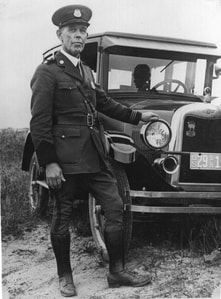 Frank McMahan Frank McMahan Good morning! Welcome to another This Week in USBP History! Let's start this week discussing the Patrol's rank insignia. Before diving in, you may want to visit and read The U.S. Border Patrol’s Early Rank and Time-in-Service Insignia. It has a GIF (12 images that cycle every 5 seconds) of the examples of the rank insignia and time-in-service insignia that was in place from 1928-1942 of which I'll write about below. Let me backtrack to the beginning... From its creation in 1924 until General Order 61 (GO-61) in 1926, the Patrol had only two positions, and neither had an official rank insignia;
From 1924-1928, the Patrol did not have an official rank insignia. We know that to be true based on this memo from Chief of the Border Patrol Ruel E. Davenport (1878-1961), "The lack of any insignia of rank for ranking officers of the Patrol Service is also noticeable." However, there exists photographic evidence of some rank insignia being used outside of any policy such as the case of the insignia worn by Frank McMahan at the bottom of his left sleeve. On March 18, 1926, GO-61 was signed and came into effect on April 1, 1926. GO-61 restructured the Border Patrol, creating three additional positions and renaming one:
The sixth supplement to General Order 42, dated April 4, 1928, contains the earliest Border Patrol rank and time-in-service insignia that have been located.
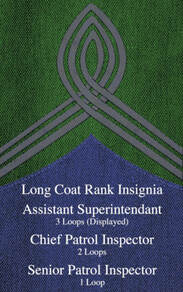 The rank insignia above weren't the only rank insignia in place at the time, there were also unique insignia for the long coat.
These insignia were in place until approximately 1942 when the Patrol's third uniform policy was implemented. Sadly, no examples of that policy is known to exist. However, it is known that the aforementioned rank insignia were discontinued. With the new uniform policy, the shoulder ornaments that had been worn as part of the uniform for all Patrol Inspectors since 1924 were used to identify ranking inspectors. It is thought that the 1942 uniform policy concerning rank was significantly similar to the 1956 uniform policy, see below:
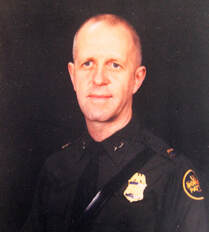 Roger "Buck" Brandemuehl, Chief of the Border Patrol, 1980-1986 Roger "Buck" Brandemuehl, Chief of the Border Patrol, 1980-1986 The shoulder ornaments and titles on badges were the sole insignia of rank until September 4, 1980, when the acting commissioner issued this memo that began:
A bit of a back story for that 1980 memo. In a conversation with Roger "Buck" Brandemuehl, Chief of the Border Patrol 1980-1986, he told me that the Patrol was commonly working with the military, as it does today. The military members didn't quite grasp the shoulder ornament rank insignia, so Buck pushed to have the military rank insignia implemented so that the military would have a better understanding of to whom they were talking within the Patrol. The 1980 rank insignia began with captain’s bars for first-line supervisors and ended with 2 stars for the Chief of the Border Patrol (Assistant Commissioner). Chief Patrol Agents wore 1 star. Within the implementation of the military rank insignia, the traditional shoulder ornaments were still used, roughly following the aforementioned 1956 guidance. The next large change in the Patrol's rank insignia came in 2003. The most significant of the changes were that the Chief of the Border Patrol wore four stars (making Chief Gustavo De La Vina the first 4-star Chief) and Chief Patrol Agents wore two stars. Later, sometime around 2010, the shoulder ornaments no longer were symbols of rank but became location identifiers agents in supervisory and managerial positions. Gold should ornaments denoted supervisory and managerial agents assigned to USBP HQ, silver ornaments denoted sector HQ supervisory and managerial agents, and oxidized ornament denoted station level supervisory and managerial agents. However, for reasons never adequately explained to me, the Academy uses a combination of silver and oxidized shoulder ornaments. I would think that all Academy supervisory and managerial should wear silver ornaments like the sector HQs. However, as the years have passed the Border Patrol has strayed from official documents that continue to provide excellent equivalency in applying military rank insignia to Senior Executives and GS employees. See the following;
However, the Border Patrol’s rank insignia is not related to the scope and complexity of the position as is reflected in a position's pay grade. The Patrol's rank insignia is title-centric and is related more to the perceived level of prestige of a given position. That's why a GS-13 supervising less than 10 people wears the identical insignia as a GS-15 who is responsible for over 600 people (Patrol Agents in Charge all wear eagles as rank insignia regardless of pay grade). As another example, the GS-15 CPA of Ramey Sector with less than 100 employees wears 2-stars when SES DCPAs and SES HQ Deputy Directorate Chiefs wear 1-star. So, wrapping it up... In today's Patrol, there are far more titles than pay grades and insignia. The fickle concept of prestige trumps the carefully considered pay grade of positions in the application of insignia assignment. Restating the 1980 memo, rank insignia were implemented ...to enhance the recognition of our supervisory and staff Border Patrol agents. I argue that the recognition is diminished when the system allows GS-13s and GS-14s to wear the same insignia as a GS-15, when SESs wear a lessor insignia than a GS-15, and prestige provides the foundation of rank assignment instead of pay grade. But, I could be wrong... This week brings us tons of USBP history! We start with a 1910 memo concerning compensation for "mounted inspectors. There are shootings, seizures, and the earliest known mentioning of two modern positions. We celebrate the Newton-Azrak Award action anniversary for two recipients. We also remember the loss of six of our fallen, including two that fell in the same event. Jesus de la Ossa and Thomas J. Williams fell due in the same incident in 1998. A sad fact is that the USBP has lost two Agents/Inspectors due to the same event nine times (18 fallen). Their names are listed below:
Daniel P. Cox and Edgardo Acosta-Feliciano both fell on July 31, 2021. However, their causes of death were not related. Enjoy the blog and have a great week! Cliff PS -
Esprit de Corps The workplace climate resulting from a combination of organizational pride and employee morale.
Esprit de corps is reinforced through the shared goals, mission and values of the organization and its employees. The definition turns Esprit de Corps into a simple formula and defines parts that comprise organizational pride and employee morale. Esprit de Corps = Organizational Pride + Employee Morale Esprit de Corps is the key to a healthy organization and engaged employees. Honor First is foundational to the Border Patrol's organizational pride and integral to its Esprit de Corps. Documents/Events 1910
Newton-Azrak Award Action Anniversaries Follow this link to see examples of USBP employees Upholding Honor First.
2016 Juan Cruz Jr. - photo Border Patrol Agent Weslaco, Texas Marcus K. Johnson - photo Border Patrol Agent Weslaco, Texas The incident occurred on October 19, 2015, at approximately 2:00 a.m. Border Patrol Agents Juan Cruz, Jr. and Marcus K. Johnson responded to a call for assistance by agents working border enforcement duties near the Hidalgo, Texas, Settling Basin. A subject had jumped into the water basin and was struggling to stay afloat. The potential victim was frantically screaming for help and periodically dipping below the surface of the water. The agents quickly improvised a safety line from tow straps and courageously entered the dark, cold water in an attempt to rescue the subject. Unfortunately, the improvised safety line was not long enough to reach the subject and the dangerous conditions forced the agents to return to land. Cruz swam out for a second time in an attempt to throw the subject a floatation device, but that attempt also failed due to the subject’s panicked state of mind. Upon the arrival of the City of Hidalgo’s Fire Department, the agents were informed that the fire department would not attempt a rescue due to policy constraints dealing with the dangers involved in a night time water rescue. Both Cruz and Johnson ignored the injuries they had suffered to their bare feet on their previous rescue attempts and for a third time volunteered to try to rescue the subject. They borrowed life vests from the fire department and re-entered the dangerous water. On the third attempt, the agents managed to reach the subject and provide him with a life vest and were able to successfully extract him from the water without further incident. The subject was examined by emergency medical technicians at the scene and found to be in good health and not in need of further medical attention. Both Cruz and Johnson were treated for their injuries at a local hospital and released the same night. USBP Fallen As of May 16, 2022, the U.S. Border Patrol has suffered 152* fallen. Titles:
The facts regarding each officer are presented without major editing of the "language of the day" found in the reports detailing the circumstances of each event. This is done to provide the reader an association with historical timeframes. Employees who died in the line of duty due to being exposed to deadly illnesses will not have the cause of death listed. *With the exception of two of the fallen immediately below, all names are listed (or in the process of being included) on the official Honor Roll of U.S. Border Patrol Fallen and inscribed on the National Law Enforcement Officers Memorial. The U.S. Border Patrol should fix these discrepancies. HonorFirst.com honors both of the fallen.
1922
Charles Gardiner Date of Birth: February 5, 1882 Entered on Duty: August 15, 1918 Title: Mounted Watchman End of Watch: October 21, 1922 Details Mounted Guard Charles Gardiner was shot and killed without warning by the driver of a wagon loaded with smuggled liquor. Gardiner was approaching the vehicle to inspect it when the unprovoked attack occurred. The report indicated that he approached a one-horse wagon containing two Mexicans for the purpose of questioning them as to their immigration status and that they jumped from the wagon, immediately firing upon him from close range. Death Certificate Survivor benefits - As per this document, his wife received $66.67 per month for her and their four children. Then $49.50 for her and one child. Gravesite 1956 John A. Rector Date of Birth: August 23, 1898 Entered on Duty: March 13, 1928 Title: Patrol Inspector End of Watch: October 16, 1956 Details: At approximately 11:30 a.m., October 16, 1956, Patrol Inspector John A. Rector was accidently shot by the firing of a .357 Magnum revolver by fellow officer, Bill Jordan. The mishap occurred at the Chula Vista Sector Headquarters as two officers were discussing various guns and their limitations and advantages. During the course of the conversation, the .357 Magnum was unloaded, examined, then reloaded, and placed in a desk drawer. The two officers then examined a .22 revolver and soon the discussion returned to the .357 Magnum. At this point, Patrol Inspector Jordan reached into the desk drawer, picked up the pistol, and without realizing that it had been reloaded, pulled the trigger. The bullet passed through a partition wall into Patrol Inspector Rector's office where it struck him in the left jaw and ranged up through his head. Upon arrival of an ambulance and a doctor, Patrol Inspector Rector was removed to the Paradise Valley Hospital in National City. Two neurosurgeons from San Diego were called; however, nothing could be done for Inspector Rector. He died at approximately 2:00 p.m. the same day. Gravesite 1967 Elgar B. Holliday Date of Birth: October 6, 1911 Entered on Duty: June 19, 1944 Title: Senior Patrol Inspector End of Watch: October 18, 1967 Details: In September 1967, Hurricane Beulah struck the lower Rio Grande Valley and adjacent areas causing extensive wind and flood damage. During the emergency, Patrol Inspectors rendered assistance in the protection of life and property, performing exhaustive and arduous tasks and working long periods of time without rest or relief. Senior Patrol Inspector Elgar B. Holliday was engaged in continuous emergency work assignments for three days. During the third day, September 24, 1967, he was stricken, suffering from extreme shortness of breath and pains in the chest. Showing signs of complete exhaustion, he was taken to a doctor, who gave him an injection and diagnosed the difficulty as heart failure due to over-exertion. Mr. Holliday was subsequently placed in the St. Joseph's Hospital, Houston, Texas, where he died on October 18, 1967. Gravesite
1979 Weldon Smith Date of Birth: July 18, 1939 Entered on Duty: November 2, 1970 Title: Aircraft Pilot End of Watch: October 19, 1979 Details: During the afternoon of October 19, 1979, Pilot Weldon Smith had been working with ground agents Roxy D. Kieffe and Frank Ureta, Jr., of Rio Grande City Border Patrol Station. They were trailing aliens on the Gallagor Ranch, about 10 miles north of Guerra, Jim Hogg County, Texas. Pilot Smith returned to McAllen to refuel. As he was returning to the location of the aliens, he passed about 100 feet over Kieffe, relocated the trail, and started relaying the location to Kieffe. He said, "I found the tr-" and quit transmitting in mid-sentence. Officer Kieffe did not see the crash, but saw the smoke and ran toward it. The plane was completely engulfed in flames, destroyed by the impact and fire. Pilot Smith died on initial impact. A Justice of the Peace from Hebbronville, Texas, held an inquest upon arrival at the scene of the accident and pronounced Pilot Smith dead. Subsequent investigation determined that the aircraft had stalled and the pilot was unable to recover from the stall. Gravesite 1998 Jesus de la Ossa Date of Birth: June 21, 1965 Entered on Duty: November 28, 1993 Title: Senior Patrol Agent End of Watch: October 20, 1998 Details: On Tuesday, October 20, 1998, at 7:00 p.m., Agents Jesus De La Ossa and Thomas J. Williams were traveling to San Diego after successfully completing the Border Patrol Academy Instructor’s Course. They were involved in a head-on collision with another vehicle and lost their lives in the accident, which happened about 15 miles west of Artesia, New Mexico. Agent De La Ossa was born in Nogales, Arizona. Before entering the Border Patrol, Agent De La Ossa served as a military policeman in the U.S. Air Force. He joined the INS as a Border Patrol Agent and was later promoted to Senior Patrol Agent. At the time of his death, his official station was Brown Field, California. He was a graduate of the 264th session of the U.S. Border Patrol Academy in Glynco, Georgia. Gravesite Thomas J. Williams Date of Birth: July 21, 1966 Entered on Duty: May 5, 1994 Title: Senior Patrol Agent End of Watch: October 20, 1998 Details: On Tuesday, October 20, 1998, at 7:00 p.m., Agents Thomas J. Williams and Jesus De La Ossa were traveling to San Diego after successfully completing the Border Patrol Academy Instructor’s Course. They were involved in a head-on collision with another vehicle and lost their lives in the accident, which happened about 15 miles west of Artesia, New Mexico. Agent Williams was born in Hazel Green, Wisconsin. He graduated from Western Illinois University Magna Cum Laude with a degree in criminal justice. He served in the Navy for four years, two of which were served on the submarine USS Henry Clay. He joined the INS as a Border Patrol Agent and was later promoted to Senior Patrol Agent. At the time of his death, his official station was Brown Field, California. He was a graduate of the 266th session of the U.S. Border Patrol Academy in Glynco, Georgia. Gravesite October 9 - October 15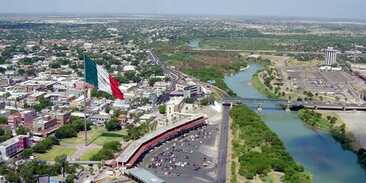 Good morning! Welcome to another This Week in USBP History! Let's start today's newsletter discussing flags. To lay a foundation, I remember being young agent in Laredo and seeing an absolutely huge Mexican flag across the river. One source has the flag being roughly 93' X 164' and weighing almost 800 pounds! My partner and I were discussing the Mexican flag and he was upset that it was larger than the United States flag on our side of the border. He told me that the United States should fly a larger flag. I countered his suggestion by telling him that both the United States and Mexico could better spend their money on things far more important than flying ever larger flags. I continued by telling him that regardless of the relative sizes of the national flags that the United States was a better country. The size of the flag didn't matter. Continuing on the theme of flags, when was the last time you saw a military joint color guard? Did you notice the order of the flags, their precedence? There are several rules that define the order. Two of the main rules are:
Look at the photograph of the military color guard below. The order of the flags are (L to R):
Let's unpack that order of precedence. Obviously, the United States flag is the highest because it represents a country, and the U.S. Army flag is second because it's the oldest of the Armed Forces (not counting the National Guard). The U.S. Coast Guard is the most junior, I guess, because it's not part of the Department of Defense in peacetime. I imagine that another argument for the USCG flag being last is that the Secretary of the Department of Defense is #6 in the United States Presidential line of succession and the Secretary of Homeland Security is #18. Although, Secretary Mayorkas is Constitutionally ineligible to become President because he was born in in Havana, Cuba and therefore not a natural-born citizen. But what about the Navy and Marine Corps flags? The Navy is clearly older than the Marine Corps, right? Well, there are several stories and I'll briefly give one of them... Both the USN and the USMC can trace their beginnings to the 1775 dates listed above, making the USN 28-days older that the USMC. What many people do not know, is that both services were disbanded after the Revolutionary War in 1783. The USN was reconstituted in 1794 and claimed their year of reconstitution as its new date of creation. When the USMC was reconstituted in 1798, it recognized its original 1775 date if creation, making it the older service. However, in 1972, Chief of Naval Operations Admiral Zumwalt authorized the USN to recognize the 1775 date as the date of creation. But, 50 years later and the old precedent is still unbroken with the USMC flag still taking precedence over the USN flag. I know what you're thinking, "Great military history lesson, Cliff. Do you have point that's related to the Patrol?" I do have a point... Did you know that within Customs and Border Protection, several of the Offices have organizational flags? I'm going to discuss only the three of the flags of the uniformed Offices... Air & Marine Operations (AMO), Office of Field Operations (OFO), and the U.S. Border Patrol (USBP). Specifically, I'm going to speak of their order of precedence... Above, I've displayed the flags in their order of precedence based on alphabetical order, which is an accepted order of precedence. Many times, all of the state flags of the United States will be displayed in alphabetical order. However, from 2003 to 2016 the USBP flag nearly always took precedence over the other Office flags. It became the practice within CBP that was followed in every color guard although not supported by any official document. The Office flags were displayed - USBP, OFO and AMO. The arguments that support this approach are:
I will also note that the argument could be presented that the OFO flag should take precedence over the other CBP Office flags for the following reasons:
However, no other CBP Office, including the USBP, is required to follow the official guidance from OFO. So, nearly two decades after the U.S. Customs Service was renamed U.S. Customs and Border Protection (see page 186 of this document), something as simple as an Office flag precedence has not been established. Regardless of the logic applied to define the order of precedence, the Office of the Commissioner should create the document and provide the guidance. Recalling how this intro began... It does not matter the size of an organization's flag, nor where it's located in an order of precedence. An organization's pride is not anchored to such trivial concepts. Whether the USBP's flag is first, last, largest or smallest, the Patrol is a meaningful organization that is rich in history, tradition and culture! Honor First! As always, this week brings us many interesting anniversaries in USBP history. We start with a 1907 document concerning Jeff Milton. We see 1918 memo from the Father of the Border Patrol. We also have three references form Joe Banco's must buy USBP History books. We remembered Border Patrol heroes on the anniversary of the actions that led them to being presented the Newton-Azrak Award. Finally, we remember Patrol Inspector Henely L. Goode Jr. who died due to a duty related injury in 1969. Enjoy the blog and have a great week! Cliff PS -
Esprit de Corps The workplace climate resulting from a combination of organizational pride and employee morale.
Esprit de corps is reinforced through the shared goals, mission and values of the organization and its employees. The definition turns Esprit de Corps into a simple formula and defines parts that comprise organizational pride and employee morale. Esprit de Corps = Organizational Pride + Employee Morale Esprit de Corps is the key to a healthy organization and engaged employees. Honor First is foundational to the Border Patrol's organizational pride and integral to its Esprit de Corps. Documents/Events 1907
Newton-Azrak Award Action Anniversaries Follow this link to see examples of USBP employees Upholding Honor First.
1980 Myron B. Merchant - award memo, news article Border Patrol Agent Swanton, Vermont On October 14, 1979 at approximately 10:30 p.m. a call was received by Border Patrol Agents at Rouses Point, New York that two men were walking in a sparsely populated rural area south on Cannon Corners Road near Mooers Forks, New York. Border Patrol Agent (BPA) Myron Merchant and another agent responded to the call. BPA Merchant took a surveillance position at the intersection of Cannon Corners Road and Route 11. Soon afterwards, BPA Merchant saw two men walking a short distance from his location. Suddenly the men ran into the woods. BPA Merchant notified the other agent by radio of the circumstances and followed the suspects into the woods. About fifty feet from the road BPA Merchant came under close range gunfire. One shot struck him in the upper abdomen, knocking him to the ground. One of the assailants walked toward him and raised his weapon in an apparent attempt to kill him. BPA Merchant instinctively rolled on the ground as the assailant fired narrowly missing him. BPA Merchant drew his weapon and returned the gunfire, killing the assailant. While seriously wounded, BPA Merchant marked the position of the dead man with his flashlight and then crawled on his back to the road where he was met by the agent he had earlier radioed. During the gunfire the second man fled. He was captured later at a New York State Police roadblock in Mooers, New York. BPA Merchant’s ability and presence of mind to be able to give a description of the second man greatly contributed to his capture. The two men were later identified as two escapees who had been charged with murdering a Montreal, Quebec police officer and seriously wounding two other officers of that city. BPA Merchant’s actions that evening reflect his great personal courage and presence of mind during an emergency life and death situation. 2002 Robert H. Arnold Jr. Senior Patrol Agent El Paso Sector Herbert L. Williams Supervisory Border Patrol Agent El Paso Sector Senior Patrol Agent Robert H. Arnold Jr. and Supervisory Border Patrol Agent Herbert L. Williams were recognized for their acts of bravery and heroism during the pursuit of a narcotics load vehicle after it illegally entered the U.S. with 1,900 pounds of marijuana. On October 12, 2002, Agent Arnold and his partner Border Patrol Agent Valerie Jaramillo pursued a narcotics load vehicle back to the Rio Grande River after it had entered the United States illegally. This occurred approximately 27 miles east of the Ft. Hancock, Texas Port of Entry. The driver abandoned the vehicle (containing 1,900 pounds of marijuana) and crossed back into Mexico. The driver, along with several other armed assailants, began shooting into the United States at these agents. Agents Arnold and Jaramillo were ambushed and came under heavy gunfire. Agent Jaramillo was shot in the leg and the same bullet narrowly missed Agent Arnold. Additional rounds struck the engine compartment and battery, disabling their vehicle. Supervisory Border Patrol Agent Herbert L. Williams entered the area as back up and took heavy fire. Agent Arnold returned fire from cover. Agent Williams positioned his vehicle in the line of fire to provide additional cover so that Agent Jaramillo could be extracted safely. Agents in self-defense of the heavy automatic gunfire fired over 240 rounds. Agent Arnold removed Agent Jaramillo to Agent Williams vehicle and then left the scene to meet with a medical helicopter. Agent Williams provided cover fire as they left the area, at which time they were continuing to take heavy fire from Mexico. Agent Williams was able to safely get out of the line of fire and Agent Jaramillo subsequently recovered from her gunshot wound. USBP Fallen As of May 16, 2022, the U.S. Border Patrol has suffered 152* fallen. Titles:
The facts regarding each officer are presented without major editing of the "language of the day" found in the reports detailing the circumstances of each event. This is done to provide the reader an association with historical timeframes. Employees who died in the line of duty due to being exposed to deadly illnesses will not have the cause of death listed. *With the exception of two of the fallen immediately below, all names are listed (or in the process of being included) on the official Honor Roll of U.S. Border Patrol Fallen and inscribed on the National Law Enforcement Officers Memorial. The U.S. Border Patrol should fix these discrepancies. HonorFirst.com honors both of the fallen.
1969
Henley M. Goode, Jr. Date of Birth: April 7, 1929 Entered on Duty: August 24, 1953 Title: Patrol Inspector End of Watch: October 11, 1969 Details: During the morning of September 6, 1969, Patrol Inspector Henley M. Goode, Jr. was injured when he fell on the steps of the U.S. Post Office Building, Fort Fairfield, Maine. He had just departed the Border Patrol Office on the second floor of the building and as he neared the lobby level, he tripped and fell a short distance to the lobby floor. There were no witnesses to the accident, but several postal employees heard the sound of someone falling and a voice calling for help. They responded immediately, and obtained a doctor and an ambulance. Examination revealed Patrol Inspector Goode had sustained a fractured left kneecap (Patella). He died unexpectedly on October 11, 1969, at the Fort Fairfield Community Hospital. His death was attributed to pulmonary embolus. Gravesite October 2 - October 8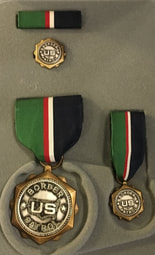 USBP Achievement Medal USBP Achievement Medal Good morning! Welcome to another This Week in USBP History! I'm going to start out by comparing the ease of purchasing military awards and insignia to the great difficulty of a current or former USBP employee obtaining an extra/replacement Border Patrol award or device... Military Insignia and Awards Would you like to purchase a Navy Seal Trident? If you wish, you can purchase one from Vanguard for $13.70. What about a Navy Cross medal? You can purchase one of those from Medals of America for $81.99. What about a Silver Star medal? Go to USA Military Medals with $40.39 and it's yours. Any military member, veteran or collector is able to purchase any military insignia and/or award, from multiple venders nearly without restriction*. *18 USC 704 regulates military medals and decorations. USBP Insignia and Awards What about active USBP employees and retirees... Where are they able to purchase replacement or extra insignia or USBP Honorary Awards? Where would someone obtain a USBP Peer Support device, BORTAC device, USBP Commendation Medal, etc...? The short answer is no USBP device or award is available for purchase by any recipient, active USBP employee, retiree or collector. What if I were to tell you I have a plan that would support the current and former workforce, collectors and the Border Patrol Museum in a win-win-win manner? A Plan of Action Here it goes - First, a CBP policy document would have to be created so that CBP/USBP would enter into official relationships with the Border Patrol Museum and Border Patrol Morale, Welfare and Recreation (BP MW&R) non-profit organizations following the model of the FBI’s relationship with the FBI Recreation Association (FBIRA).
Concerning USBP Honorary Awards and USBP Authorized Devices, it is nearly impossible for an employee or a retiree to obtain an extra set of one of their awards or devices. It would be very easy for the USBP to authorize the BP Museum to have those items manufactured for sale. It would be great for the workforce and a source of revenue for the Museum. Win / Win The approach is simple:
I recommend that USBP awards and devices be sold without restrictions, to the entire public. Let me establish some baselines on the unrestricted sale subject. All military awards are defined in law, regulation, or Executive Orders. For the military, only awards that are defined in similar documents can be worn on a military uniform. With the exception of the Medals of Honor, any person can buy and possess any military decoration. With those facts in mind, no USBP award is authorized for wear on any military uniform because our awards, although designed by the Institute of Heraldry (TIOH), are only defined in a lower-level policy signed by an SES. USBP awards are not defined in law, regulation, or Executive Orders. USBP Honorary Awards lack that level of legitimacy or bureaucratic prestige. Any person can buy and possess nearly any military decoration or device, but a USBP employee or retiree must jump through undefined hoops to get a replacement/extra medal set or authorized device. As a real-world example, a Newton-Azrak Award recipient contacted me about obtaining a medal set since he received his award before they were issued. I put him in contact with the correct USBP HQ division who promptly denied his request. On the recipient's behalf, I emailed the highest levels of Border Patrol headquarters until, almost three months later, the recipient received a Newton-Azrak Award Medal set from HQ. It should not be difficult for a recipient to receive a replacement/extra award set. A retiree should not have to persistently contact high-ranking USBP executives because a division of HQ failed to take care of the workforce or retirees. If the BP Museum received authorization to sell all USBP awards and authorized devices, it would make it easy for employees and retirees to get replacement/extra sets. If a collector wishes to purchase them, it would equate to additional revenue for the Museum. Here's an example. A USBP Achievement Medal set costs @ $15-$20 to manufacture. The Border Patrol Museum would have no problem selling them for $75. Similar profit margins could be applied to every USBP award and USBP device. Awards and devices would be available for purchase and the BP Museum would have several new streams of profitability. Win Win Win Now to the blog! This week starts with a great correction and addition in the Housekeeping section. I actually do get excited to be corrected so that I may present the best USBP history available. There are documents that pre-date the USBP, the Patrol's first job announcement, and a gunfight in El Paso and in Campo. There is a fencing estimate from 1953, and the 35th anniversary of the Patrol's newest sector. We remember three Newton-Azrak Award recipients on the anniversaries of their actions. We also remember the loss of five of our fallen, including two that fell in the same event. Friedrich Karl and John S. Blue fell due in the same incident in 1973. A sad fact is that the USBP has lost two Agents/Inspectors due to the same event nine times (18 fallen). Their names are listed below:
Daniel P. Cox and Edgardo Acosta-Feliciano both fell on July 31, 2021. However, their causes of death were not related. Enjoy the blog and have a great week! Cliff PS -
Esprit de Corps The workplace climate resulting from a combination of organizational pride and employee morale.
Esprit de corps is reinforced through the shared goals, mission and values of the organization and its employees. The definition turns Esprit de Corps into a simple formula and defines parts that comprise organizational pride and employee morale. Esprit de Corps = Organizational Pride + Employee Morale Esprit de Corps is the key to a healthy organization and engaged employees. Honor First is foundational to the Border Patrol's organizational pride and integral to its Esprit de Corps. Documents/Events 1918
Newton-Azrak Award Action Anniversaries Follow this link to see examples of USBP employees Upholding Honor First.
1991 Howard H. Gay (1945-1990) Border Patrol Pilot Marfa Sector Posthumously Awarded On October 3, 1990, while driving to work in the morning thick fog, Border Patrol Pilot Howard H. Gay noticed a stranded motorist on the highway. Realizing the danger, Mr. Gay attempted to turn around to render assistance when he was struck and killed by an on-coming vehicle. He will be remembered as a person always willing to help others in distress.
1994 Jose (Joe) L. Perez Supervisory Border Patrol Agent San Diego Sector On the night of October 3, 1994, Supervisory Border Patrol Agent Jose (Joe) L. Perez was performing his patrol duties in the Dulzura, CA area on Highway 94. Highway 94 runs east and west adjacent to the International Border between the United States and Mexico. While performing his patrol duties, Agent Perez came upon a one-car vehicle accident. Being the first law enforcement officer on the scene, Agent Perez took those steps necessary to notify the proper agencies through the Border Patrol Dispatch, and then took additional steps well above the call of duty. Agent Perez observed that there were three occupants trapped inside a vehicle that was overturned and resting on its roof. As Agent Perez approached the vehicle, he observed that the doors were jammed shut. Agent Perez used what leverage he could and managed to open one front door. Through this door, Agent Perez was able to remove the driver and the front seat passenger. He placed both of them out of the flow of traffic and returned to the car. Agent Perez then observed that the vehicle was on fire and that there was still one occupant trapped inside the vehicle. Agent Perez reentered the vehicle and doubled his efforts to free the remaining passenger. The last passenger was trapped between the collapsed roof of the vehicle and the rear seat with her legs hanging through the shattered rear window. Using brute strength, Agent Perez was able to force the seat to move sufficiently to allow him to extricate the passenger. Although the vehicle was on fire, Agent Perez took the time to ensure that any possible spinal or neck injuries were cared for before moving the passenger to a safe location. Agent Perez continued performing immediate first aid until the arrival of the paramedics and fire units. 2021 Robert S. Holmes - photo Border Patrol Agent Grand Forks, ND On October 3, 2020 at 9:00 PM, Bottineau Station Border Patrol Agent Robert Holmes assisted local law enforcement with a call regarding a suicidal man who was on top of a 144-foot structure. Beyond the call of duty while facing grave danger, Agent Holmes went to the top of the structure to search for the man. Upon reaching the top, Agent Holmes began searching the massive area which was riddled with shafts, pipes and other industrial hazards. Under the cover of night, Agent Holmes was able to locate the man, who was armed with a knife, near the edge of a grain elevator. Agent Holmes began a tactful conversation with the man and ultimately talked him into storing the knife in his pocket and moving away from the edge to safety. Agent Holmes’ actions brought great credit upon himself and the United States Border Patrol. USBP Fallen As of May 16, 2022, the U.S. Border Patrol has suffered 152* fallen. Titles:
The facts regarding each officer are presented without major editing of the "language of the day" found in the reports detailing the circumstances of each event. This is done to provide the reader an association with historical timeframes. Employees who died in the line of duty due to being exposed to deadly illnesses will not have the cause of death listed. *With the exception of two of the fallen immediately below, all names are listed (or in the process of being included) on the official Honor Roll of U.S. Border Patrol Fallen and inscribed on the National Law Enforcement Officers Memorial. The U.S. Border Patrol should fix these discrepancies. HonorFirst.com honors both of the fallen.
1973
Friedrich Karl Date of Birth: July 15, 1923 Entered on Duty: May 2, 1955 Title: Airplane Pilot End of Watch: October 4, 1973 Details: Both Airplane Pilot Friedrich Karl and his observer, Senior Patrol Agent John S. Blue, were stationed at Yuma, Arizona, when they were killed in an airplane crash. The officers were on a sign cutting and aircraft patrol assignment, having departed from the Yuma County Airport at approximately 6:00 a.m., on October 4, 1973. The flight also served to acquaint Senior Patrol Agent Blue with portions of the Yuma Sector since he had transferred there a short time before. After some five hours of flight, the officers landed at the Stoker Company Airport at Tacna, Arizona, for a rest stop and to communicate with units from the Tacna Station relative to patrol plans and operations. At approximately 12:00 noon, shortly after take-off from Tacna, the airplane struck a static line near the top of 52-foot poles of the Wellton Irrigation District power line. Contact of the landing gear with the static line caused the plane to flip, invert, and fall to the ground in an upside-down position. Both of the officers were killed instantly upon impact. Cremated John S. Blue Date of Birth: April 6, 1935 Entered on Duty: November 23, 1960 Title: Senior Patrol Agent End of Watch: October 4, 1973 Details: Senior Patrol Agent John S. Blue was stationed at Yuma, Arizona, where, while serving as an observer, he was killed in the crash of a Border Patrol airplane being flown by Airplane Pilot Friedrich Karl, also of Yuma. The officers were on a sign cutting and aircraft patrol assignment, having departed from the Yuma County Airport at approximately 6:00 a.m., on October 4, 1973. The flight also served to acquaint Senior Patrol Agent Blue with portions of the Yuma Sector since he had transferred there a short time before. After some five hours of flight, the officers landed at the Stoker Company Airport at Tacna, Arizona, for a rest stop and to communicate with units from the Tacna Station relative to patrol plans and operations. At approximately 12:00 noon, shortly after take-off from Tacna, the airplane struck a static line near the top of 52-foot poles of the Wellton Irrigation District power line. Contact of the landing gear with the static line caused the plane to flip, invert, and fall to the ground in an upside-down position. Both of the officers were killed instantly upon impact. Burial Details Unknown 2012 Nicholas J. Ivie Date of Birth October 13, 1981 Entered on Duty: January 3, 2008 Title: Border Patrol Agent End of Watch: October 2, 2012 Details: On October 2, 2012, Border Patrol Agent Nicholas J. Ivie, of the Brian A. Terry Border Patrol Station was mortally wounded in the line of duty. Agent Ivie and separate group of two Border Patrol Agents were responding to a sensor activation in a remote area near Bisbee, Arizona. Agent Ivie and one of the other Border Patrol Agents mistook the other in the darkness as an armed threat. They engaged each other, unknowingly in a friendly versus friendly gunfight. Both agents were injured by gunfire, with Agent Ivie suffering a fatal wound. Agent Ivie entered on duty as a member of the 733rd academy session on January 3, 2008. Agent Ivie was 30 years old at the time of his death and leaves behind a wife, two daughters, his parents and four siblings. Gravesite 2019 Robert M. Hotten Date of Birth: September 24, 1975 Entered on Duty: September 10, 2009 Title: Border Patrol Agent End of Watch: October 6, 2019 Details: On October 6, 2019, BPA Robert M. Hotten was investigating potential illegal cross-border activity in extremely rugged terrain near Patagonia, Arizona. After he failed to respond to radio calls, fellow agents responded to his last known location and found him unresponsive. Agent Hotten was airlifted to a hospital in Nogales, Arizona where he was later pronounced deceased. Agent Hotten entered on duty with the United States Border Patrol on September 10, 2009, as a member of the 910th session of the Border Patrol Academy. He was assigned to the Sonoita Border Patrol Station in the Tucson Sector following his graduation. Agent Hotten served with the United States Border Patrol for over 10 years. Burial Details Unknown 2021 David H. Gray Entered on Duty: March 21, 2016 Title: Enforcement Analysis Specialist End of Watch: October 8, 2021 Details: EAS Gray entered on duty on March 21, 2016. At the time of his passing, he was assigned to the Sector Intelligence Unit in Houlton Sector, Maine. Before joining the U.S. Border Patrol, EAS Grey honorably served his country for 20 years in the U.S. Navy. The circumstances of his passing were reviewed by an executive panel and the CBP Commissioner who determined that this death occurred in the line of duty. He is survived by his son, Harris; daughter, Marsilla; mother: Velva; and sister, Sandra. Gravesite |
Clifford GillBlog author, retired U.S. Border Patrol Assistant Chief and, current U.S. Border Patrol employee advocate. Ray HarrisSite founder and owner, former Supervisory Border Patrol Agent and retired Immigration Special Agent. Joseph BancoU.S. Border Patrol historian and retired Deputy Chief Patrol Agent. Archives
July 2024
I prefer that you leave comments. However, if you wish to contact me, please do so by emailing [email protected].
|
- Home
-
For USBP Applicants
-
USBP Pages and Links
- Firearms Qualification Course
- Military Time Buy Back
- Station MWRs
- Transitioning Out of the USBP
- Fast & Furious
- U.S. Border Patrol Fallen >
- Honor First and Esprit de Corps
- USBP Photo Galleries
- U.S. Border Patrol History >
- U.S. Border Patrol Honorary Awards
- Upholding Honor First >
- U.S. Border Patrol Authorized Devices
- Border Patrol Stories
- What's Important Now - Academy Podcast
- Badges
- Veterans
- Tips for the Media
- Links
- Acronyms
- Border Patrol Locations
- Sector/Station FaceBook Pages
- Ten Codes
- Online Forums
- Search
- Home
-
For USBP Applicants
-
USBP Pages and Links
- Firearms Qualification Course
- Military Time Buy Back
- Station MWRs
- Transitioning Out of the USBP
- Fast & Furious
- U.S. Border Patrol Fallen >
- Honor First and Esprit de Corps
- USBP Photo Galleries
- U.S. Border Patrol History >
- U.S. Border Patrol Honorary Awards
- Upholding Honor First >
- U.S. Border Patrol Authorized Devices
- Border Patrol Stories
- What's Important Now - Academy Podcast
- Badges
- Veterans
- Tips for the Media
- Links
- Acronyms
- Border Patrol Locations
- Sector/Station FaceBook Pages
- Ten Codes
- Online Forums
- Search
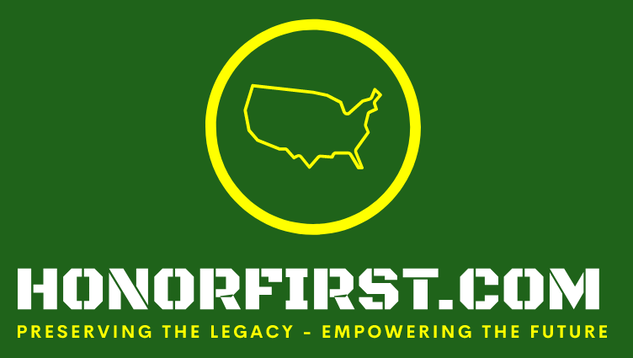

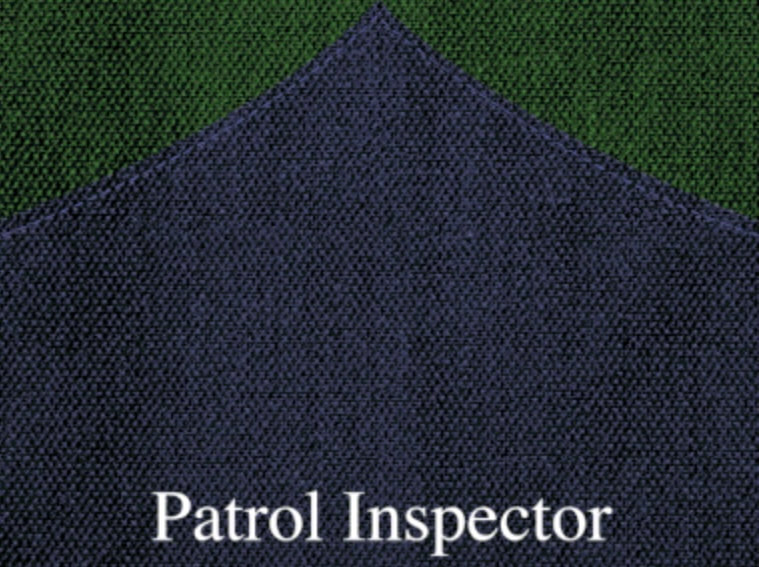
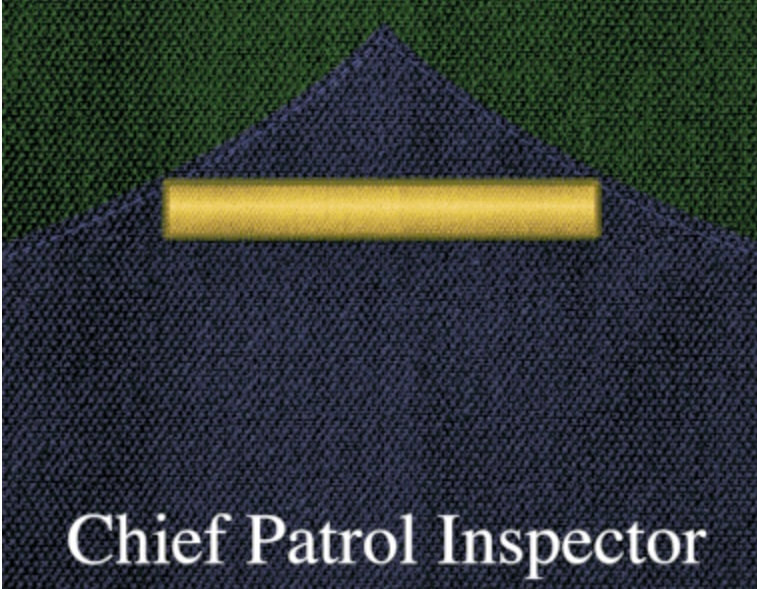
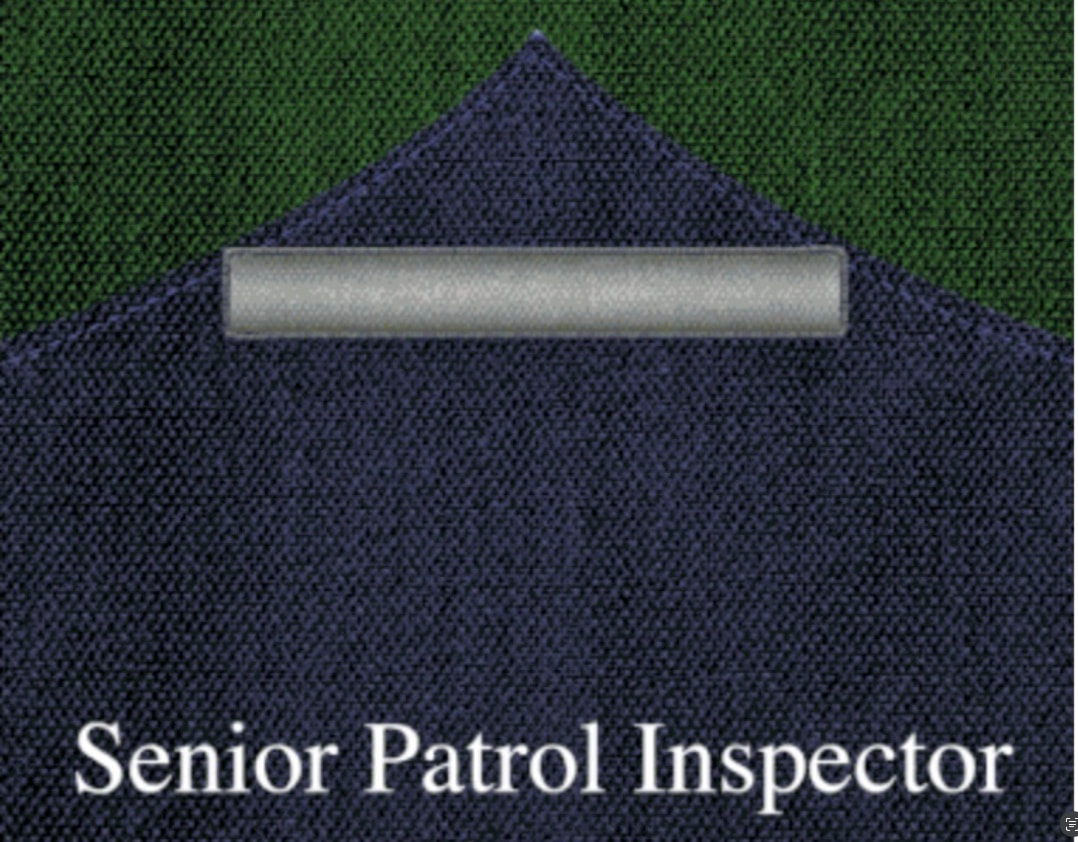
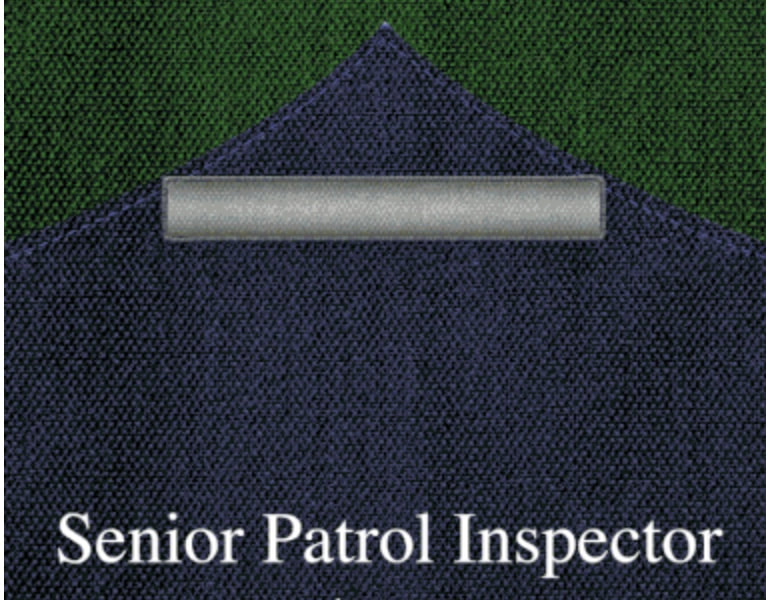

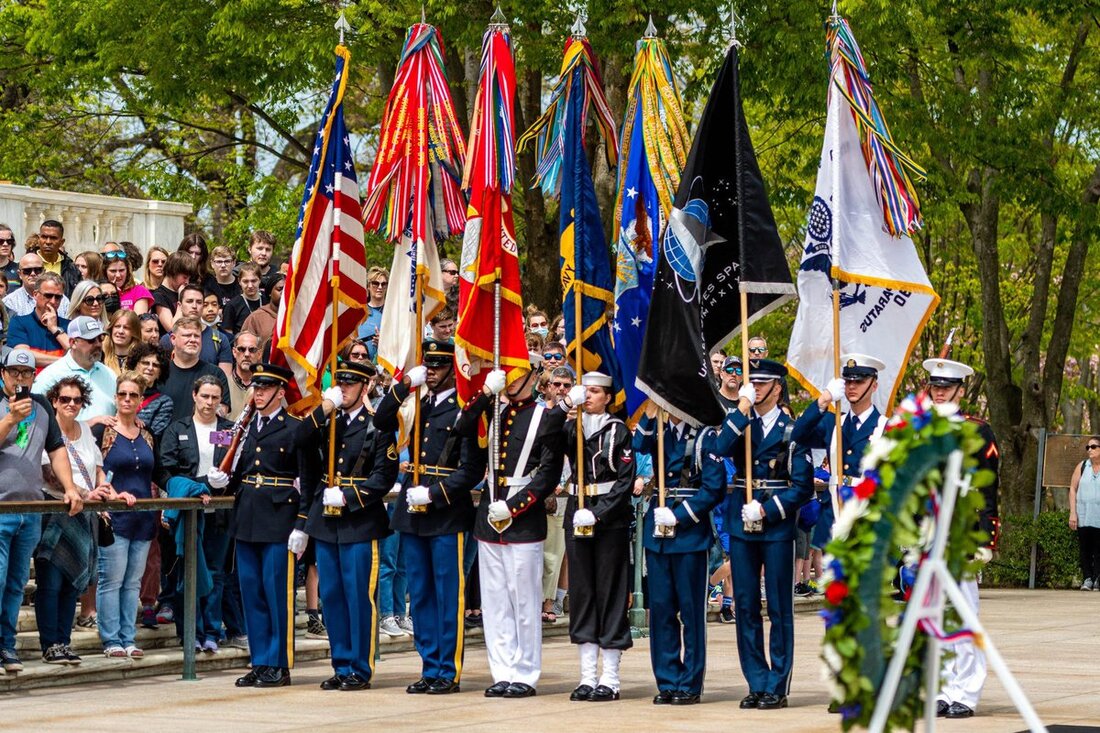
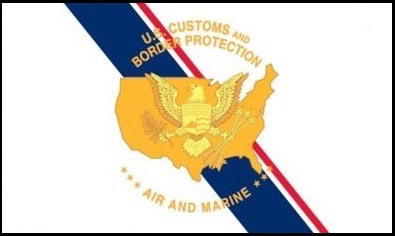
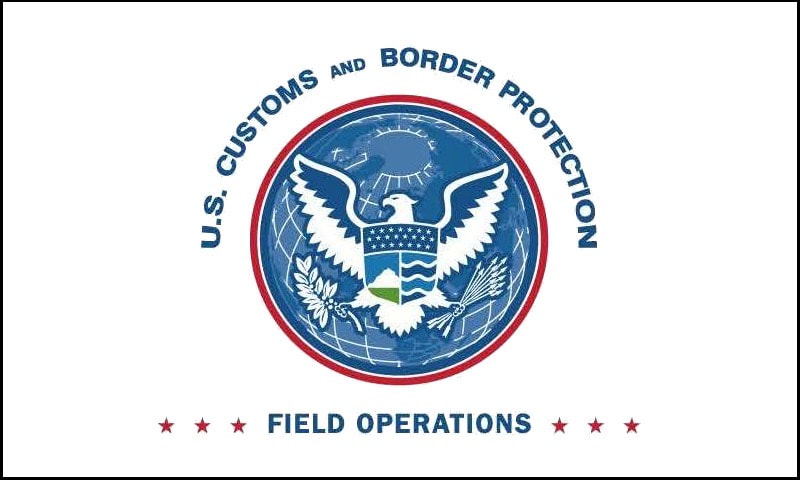
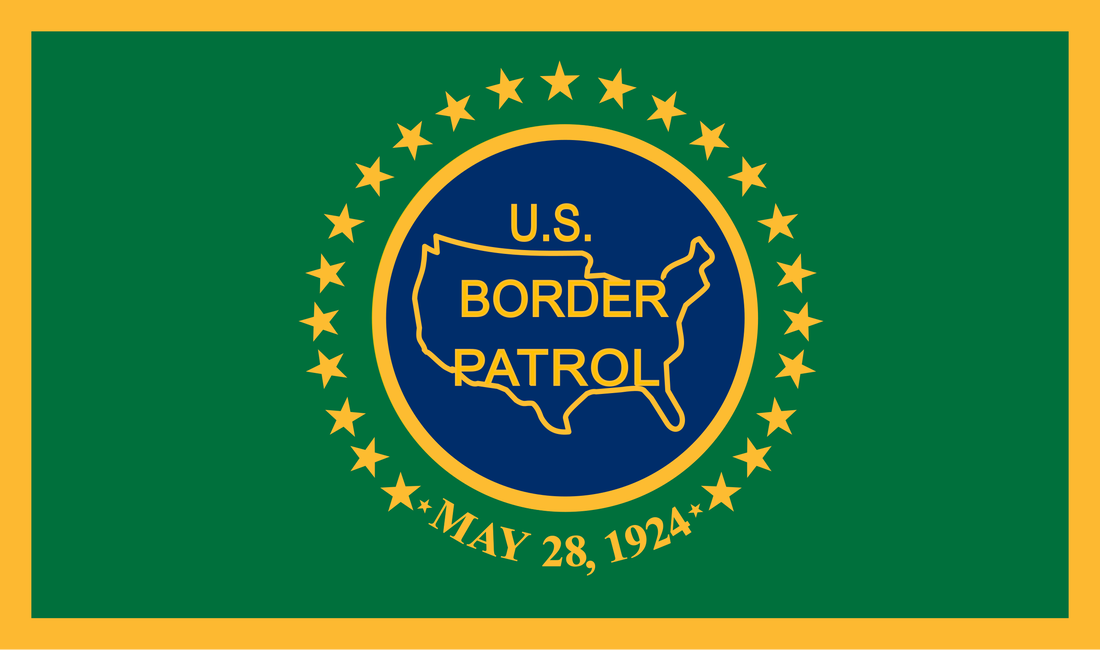
 RSS Feed
RSS Feed
